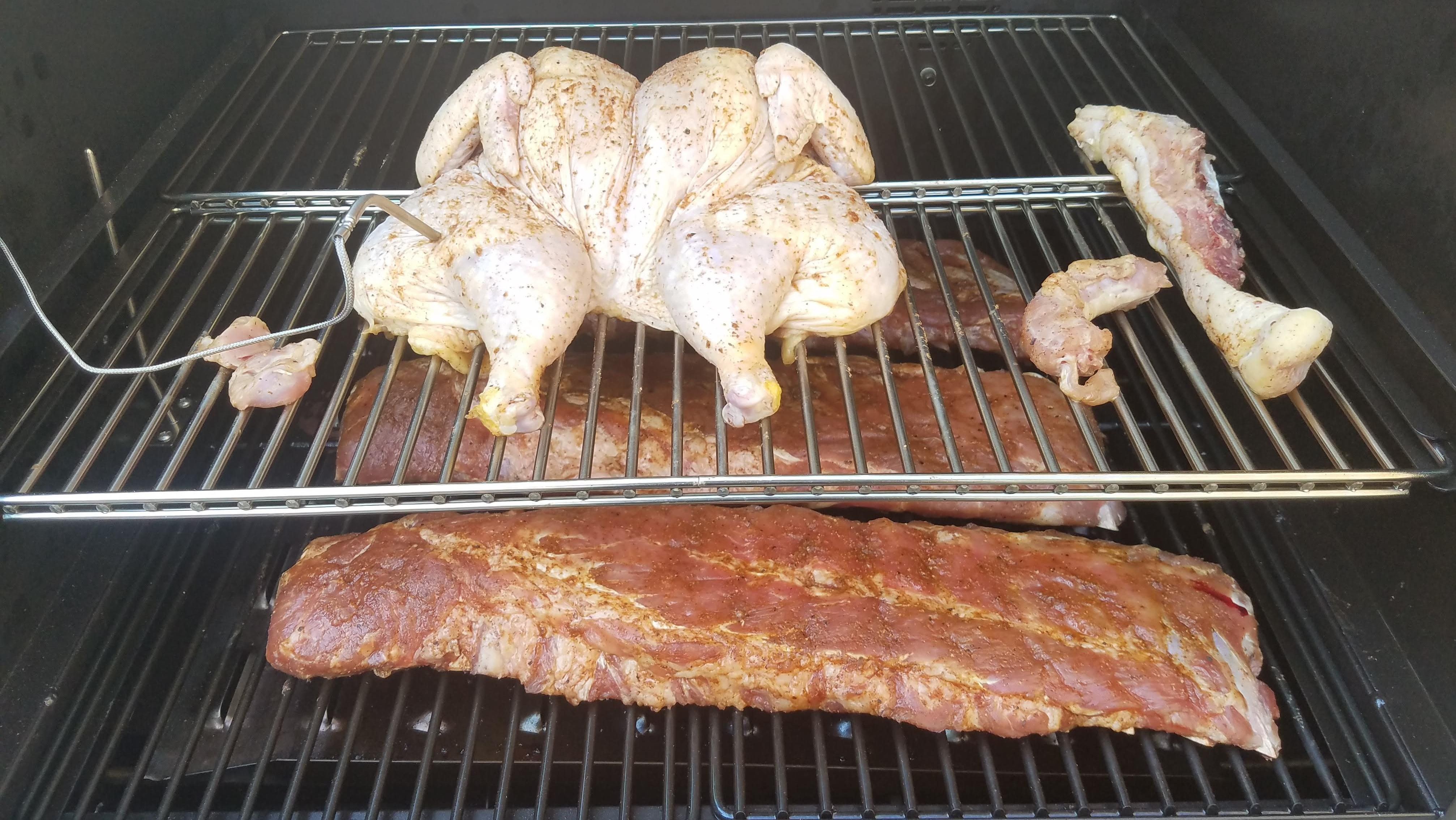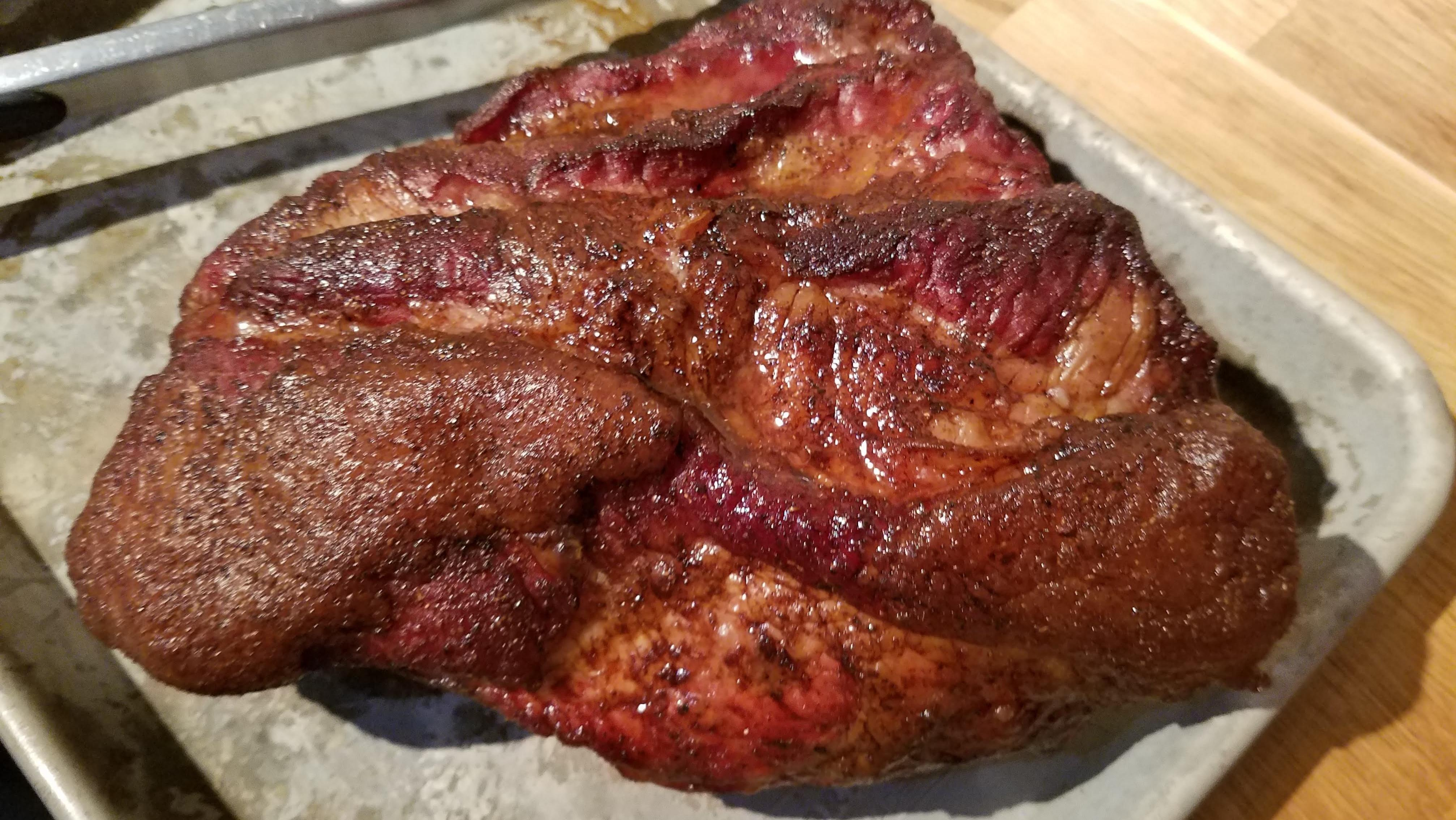Everything My Pellet Smoker Has Taught Me About Barbecue
A pellet smoker is an expensive piece of cooking hardware. Is it worth it?
We may receive a commission on purchases made from links.
American barbecue is an absolutely delicious tradition, and I understand why it's so beloved. It's a cuisine that ought be celebrated, and when it's at its peak, barbecue is an absolute masterpiece. But beyond the food itself, barbecue is special because it's a cooking skill you can hone in your own backyard, entirely separate from your kitchen, away from it all. With time and some patience, the payoff is fantastic.
Traditional barbecue at home can be done a multitude of ways. You're basically looking for any way to cook a piece of meat at relatively low heat for long periods of time. I'm talking about 200-250 degrees Fahrenheit, for anywhere from 45 minutes (for things like seafood) all the way up to 16 hours (for big hunks of meat like brisket). This cooking technique ensures you get tender, juicy results, as the natural collagen in meat, tough when raw, transforms into gelatin.
Simple barbecue setups start with a plain ol' grill fired with fuel like charcoal and wood that you set up to burn slowly. Then there are cooking rigs like offset smokers, which generate heat and smoke in a small box alongside, attached to a main cooking chamber. And then there are electric or gas-powered smokers that provide a main ignition source for wood. In short, there are a wealth of options when it comes to making barbecue at home.
These days, you can skip the learning curve altogether by getting a pellet smoker, which requires less work on your part but results in flavorful food every time. Pellet smokers have their ups and downs, though—let's get into them.

What is a pellet smoker?
Technology seems to have been merged with pretty much everything by now, and barbecue hardware is no different. While you may equate smokers with more rustic fuel sources like charcoal, there's a subset of smokers that run mainly on wood pellets. These pellets are made of compressed sawdust from your typical smoking woods, such as oak, hickory, and fruit woods like applewood and cherry. Blends of wood are also common for you non-committal folks (like me!).
Internally, pellet smokers use an auger (basically a giant screw) to feed the little cylindrical wood pellets into a small fire box, where they are then ignited. An internal fan uses convection to move the smoke and the heat around, and also to ensure even cooking. Technology!
This summer, I've been cooking with a pellet smoker from Camp Chef (which, full disclosure, they sent me to try out for free) to share the glory of smoked cream cheese and the genius recipes in chef Rodney Scott's indispensable book about barbecue, and so far, the results have been great. There are just some things to note along the way.
The model I have is called the Woodwind Wi-Fi 24 with the Sidekick attachment (similar to the model seen here). It's a 24" pellet grill (that grills and smokes) and it's Wi-Fi enabled, which I'll expand upon in a bit. The Sidekick portion is a propane burner that allows you to use attachments, like a griddle, to finish off whatever you're cooking with a dose of high heat. This is good if you're looking for a seared finish on a big fat piece of meat.
How much smoke does a pellet smoker emit? Will neighbors hate you?
I live in a big city, so as you can imagine, space comes at a premium for most of us. I'd say the Woodwind 24 has the footprint of a medium-sized grill, which is manageable within our limited outdoor area. What I was initially most worried about was the amount of smoke the pellet smoker would emit, and whether it would go straight into someone's window once it caught the breeze. If this thing billowed out aggressive amounts of smoke, I was going to have to find another place for it, because I didn't want to be an asshole.
After running it plenty of times, I'm happy to report that the amount of smoke that a pellet smoker puffs out (at least mine) isn't bad whatsoever. It's not consistently emitting clouds; it comes in batches as fresh pellets are deposited into the burning chamber to refresh the fire. My neighbor kept her screen door open and had no complaints about the smell. So my worries about making people mad turned out to be a non-issue.
On the pellet smoker’s Wi-Fi and ease of use
At first when I saw that the smoker was Wi-Fi enabled, I laughed. "Psssh," I thought to myself, "If I can just set the temp of the smoker, that's fine. I can run out to check the meat now and then." But then I downloaded the phone app, connected it to the Camp Chef smoker, and realized I wouldn't have to go outside to perform many checks, if at all. You can control the temperature of the smoker and the smoke level (on a scale of 1-10) and watch the temperature of what you're cooking with one of the four built-in temp probes that come with the device. Jeez.
This meant I had to interact with the smoker minimally, though I did keep an eye on it through our back door. I feel like we all already know this, but don't leave your cooking equipment unattended, no matter how advanced it is. You never know what might happen.
You need electricity
While the burning pellets do practically all the heating in the smoker, you do need to have it plugged in for the smoker to function. For most people this should be a non-issue; I have to run a long extension cord to the smoker, which is tedious, but not the worst thing ever.
Temperature swing while smoking meat
When you're using live fuel to cook anything, you'll naturally get temperature swings. That's just going to happen; it's influenced by variables like ambient outside temperature and airflow. Since the technology takes care of nearly all of that for you, the temperature swing in the pellet smoker is fairly minimal; it didn't fluctuate by more than 20 degrees or so, and even then it only shifted for 5 to 10 minutes before the smoker brought the temp back to 225.
Achieving bark on the meat might take practice
Bark is one of the best things about barbecue. You know, that crusty flavorful shell that's so delicious when it's mixed in with a bite of pulled pork or brisket. I've personally been having a little trouble achieving it myself on the pellet smoker. While my creations have been thoroughly bronzed with a pronounced smoke ring throughout (which is cool to look at, but not a necessary marker of good 'cue), I haven't quite been able to get a crust going.
An inquiry to the Smokers n Grillers group on Facebook indicates that it is indeed possible to achieve bark in a pellet smoker. The enthusiasts gave me a few suggestions on how to correct this, like perhaps with a coarser rub, along with a few cooking adjustments. I think I just need more practice on this front.
Regularly cleaning your pellet smoker is important
I know. Cleaning anything is a chore. I wish I were one of those people who finds chores enjoyable. But it's particularly important to keep a pellet smoker clean (and any grill, really), because grease from long hours of smoking accumulates on the drip tray, which can flare up. And the pellet smoker will accumulate piles of ash at the bottom, which need to be vacuumed out. You don't want to flirt with disaster, and you'll extend the life of your smoker with regular maintenance.
The price of a pellet smoker
Yeah, I know. These things are not cheap. As it is, I personally can't justify spending a lot of money on cooking equipment that I can only use for about half the year in Chicago. But as fall creeps in, it isn't impossible to cook on cold days; you can get jackets for your smoker to keep it insulated. This saves you a lot of fuel, but I can't imagine I'd want to shuttle back and forth too much when it's cold as hell out.
Different brands of pellet smokers start at around $300 for portable versions (which isn't terrible, but they are very small), and then they quickly move up in price for medium-sized ones ($500-800). After that, they can shoot past $1500 for larger ones with all the bells and whistles.
Should you get a pellet smoker?
If you have the money and were going to spring for something nice, I'm going to say yes. A good quality pellet smoker should last you for years, and provide you with a ton of delicious, easy-to-prepare barbecue. The Camp Chef model I have is a sturdy piece of equipment that'll hold up for a long time, provided that the gadget components don't need to be replaced at some point.
But if you can't justify shelling out that much money, don't worry about FOMO. If you're a barbecue enthusiast, you probably already have at least a basic setup with a regular grill, which will also yield actual bark on your food. So you might not need a pellet smoker in your life, but adding one would just add a different style of cooking to your repertoire, and the fact that it's so hands-off will leave you free to mess around with something else all Saturday.
So far, I'm having an absolute blast and have been enjoying some pretty fantastic food out of it, and with any luck, we'll be having smoked turkey for Thanksgiving. So in the scheme of things, I'd say it's a pretty delicious investment, if you've got the cash to throw down. And get ready, there's going to be a monster amount of great food in your future.

